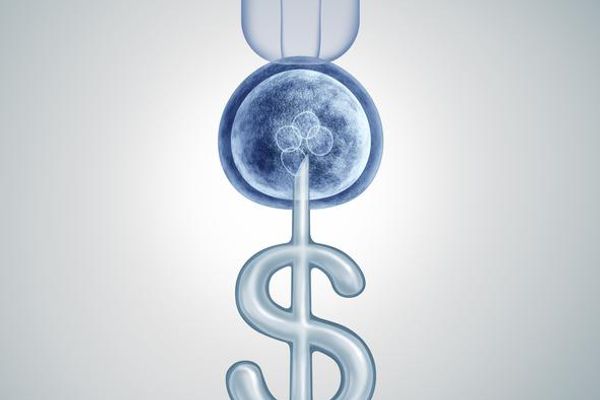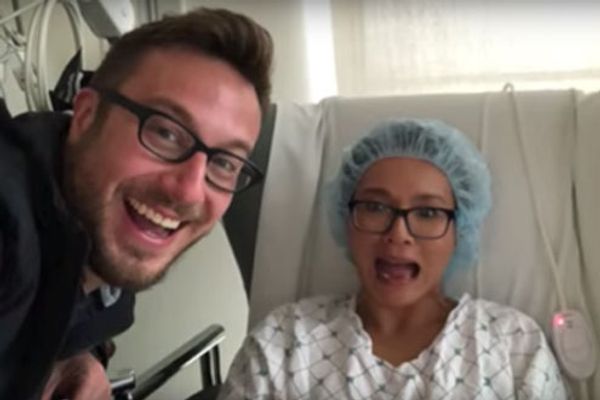THURSDAY, May 18, 2017 (HealthDay News)—A 100-year-old medical treatment could help infertile women get pregnant without undergoing pricey in vitro fertilization (IVF), a new study suggests.
The method was first used in 1917 and involves flushing a woman's fallopian tubes with an iodized poppy seed oil.
"Over the past century, pregnancy rates among infertile women reportedly increased after their tubes had been flushed with either water or oil during" a dye test of the fallopian tubes under X-ray, explained study lead researcher Ben Mol. He's with the University of Adelaide in Australia.
"Until now, it has been unclear whether the type of solution used in the procedure was influencing the change in fertility," Mol said in a university news release.
"Our results have been even more exciting than we could have predicted, helping to confirm that an age-old medical technique still has an important place in modern medicine," he added.
This study included more than 1,100 women being treated for infertility who had their fallopian tubes flushed with either the poppy seed oil or water.
Successful pregnancies occurred within six months for nearly 40 percent of the women in the oil group and 29 percent of those in the water group, the researchers reported May 18 in the New England Journal of Medicine.
The poppy seed oil used in the study is available in 47 countries worldwide, the authors noted.
"The rates of successful pregnancy were significantly higher in the oil-based group, and after only one treatment," Mol said. "This is an important outcome for women who would have had no other course of action other than to seek IVF treatment. It offers new hope to infertile couples."
However, "we still don't really understand why there is a benefit, only that there is a benefit from this technique, in particular for women who don't present with any other treatable fertility symptoms," Mol pointed out.
"Further research would need to be conducted into the mechanisms behind what we're seeing. For now, and considering the technique has been used for 100 years without any known side effects, we believe it is a viable treatment for infertility prior to couples seeking IVF," he said.
"Not only is there a known benefit, but this flushing procedure is also a fraction of the cost of one cycle of IVF. Considering that 40 percent of women in the oil-based group achieved a successful pregnancy, that's 40 percent of couples who could avoid having to go through the huge costs and emotions associated with IVF treatment," Mol concluded.
Two infertility specialists said the method may have real merit.
"There are two facts we have known for decades: First, patients who cannot conceive for a prolonged period of time will often get pregnant on their own after having an X-ray of the uterus using dye," noted Dr. Avner Hershlag. He's chief of Northwell Health Fertility in Manhasset, N.Y.
"Second, when the X-ray is done with a [fat]-soluble dye as opposed to water-soluble dye, the spontaneous pregnancy rate is higher," he added. Both of those facts were borne out in the Australian research.
Hershlag said the main contribution of the new study is "large population and the careful controls done—making it a good scientific observation."
Dr. Tomer Singer directs reproductive endocrinology and infertility at Lenox Hill Hospital in New York City. He agreed that "this very well-designed study confirms what we as reproductive endocrinologists have known for years, and reiterates the importance of assessing every part of the reproductive organs prior to initiating any fertility treatment—insemination or IVF."
Singer said the findings might be a bit different in the United States, where not everyone can have fertility treatments covered by insurance. He also said the couples in the study tended to be younger than those seen in most U.S. clinics.
But the procedure used in the study is well-known, Singer said.
"In our Center, we routinely include a fallopian-tube test for both diagnostic and therapeutic reasons—it is traditionally done between five and 12 days of the menstrual period," he said. "We advise patients that, once performed, they should try to conceive on their own or with assistance in the following months."
According to Singer, "the reason some reproductive endocrinologists shy away from oil-based contrasts as compared to water-based contrasts is the slight increased risk for pelvic inflammatory disease and side effects."
Side effects can include pelvic pain lasting for hours or a few days, and controlled by nonprescription painkillers, Singer said. "Some patients will experience a small amount of vaginal bleeding, fever or chills," he added. "Rare complications of [the procedure] are pelvic infection and allergic reaction to the dye; both are well below 1 percent."
As for study author Mol, he believes more couples should be made aware of the flushing procedure.
"Professional bodies responsible for guidelines, funders of health care, and fertility clinics all have a role to play in assisting infertile couples to make this intervention available to couples before IVF is started," Mol said.
The study is also scheduled for presentation Thursday at the World Congress on Endometriosis in Vancouver, Canada.
SOURCES: Avner Hershlag, M.D., chief, Northwell Health Fertility, Manhasset, N.Y.; Tomer Singer, M.D., director, reproductive endocrinology and infertility, Lenox Hill Hospital, New York City; University of Adelaide, news release, May 18, 2017
Copyright © 2017 HealthDay. All rights reserved.







